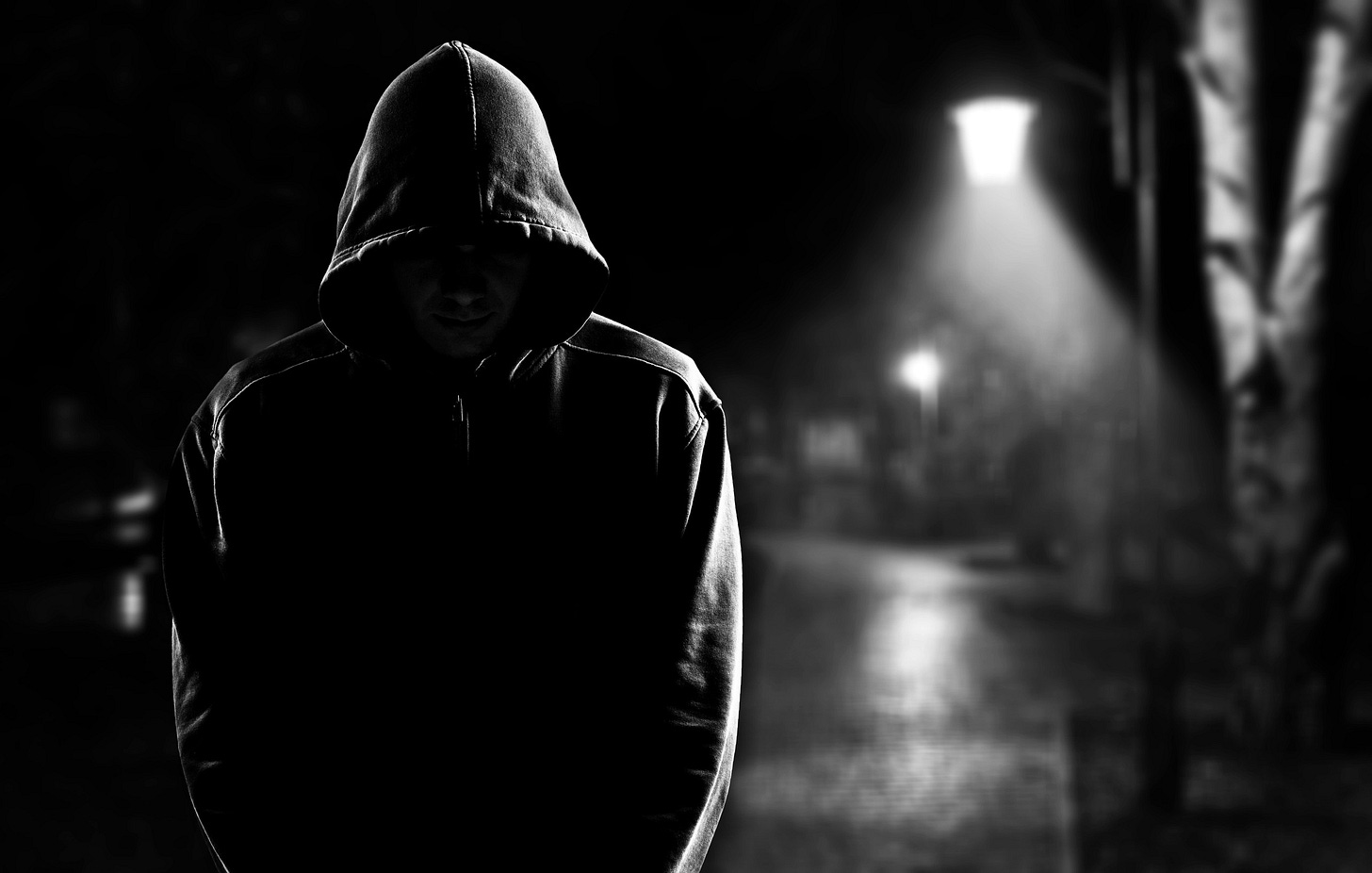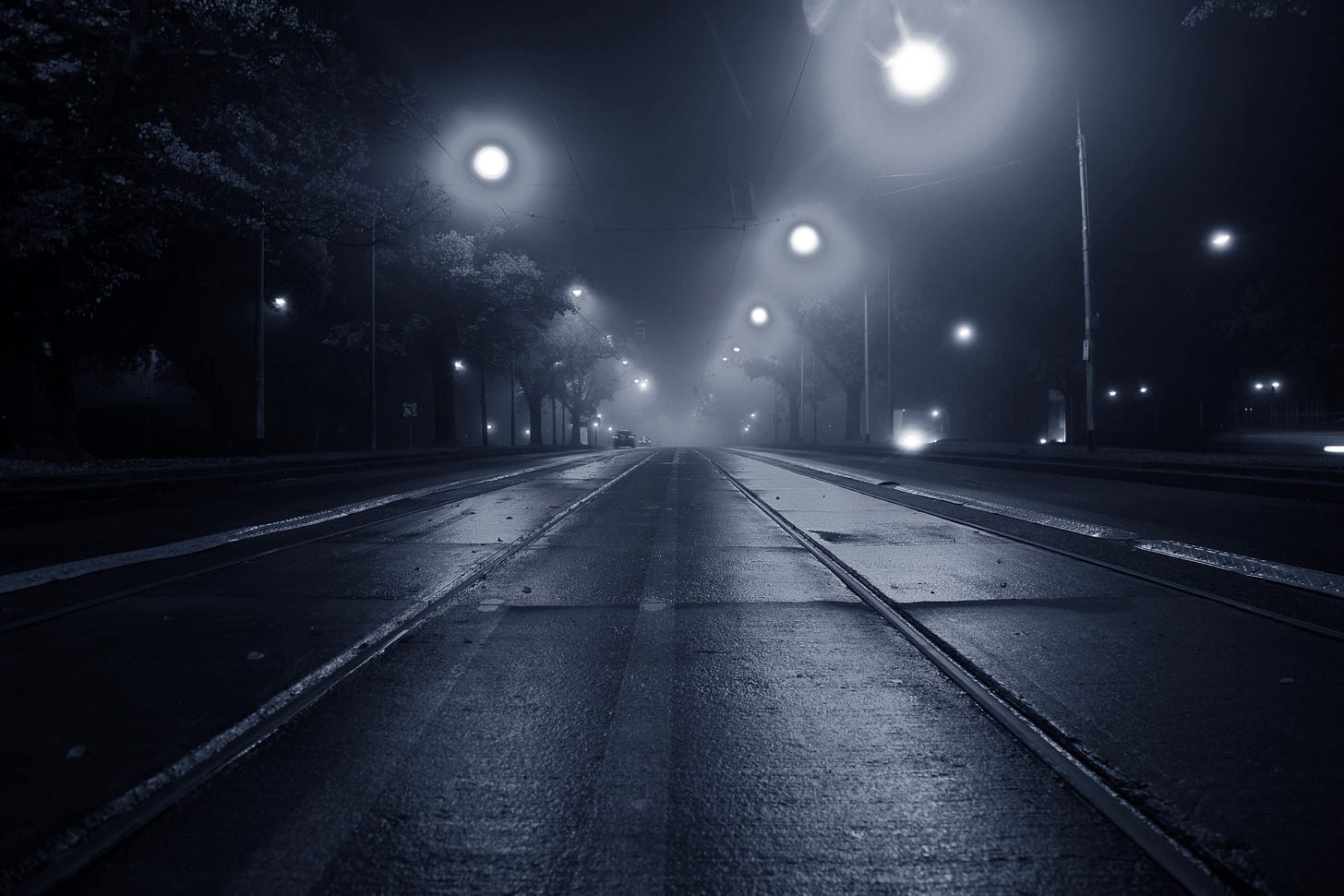Swindon is one of the safest towns in the UK - so why are we all so scared after dark?
Fear of crime has been going up over the past few years despite a huge drop in offences
Local issues deserve local journalists holding the powers that be to account. With local news in decline, knowing what is going on in our communities is more essential than ever. We can only exist because some of our readers are willing to support our work. If you value what we do, please consider becoming a paid supporter to ensure we can keep doing it.
You’re reading a special free edition of The Ink - curated community news straight to your inbox in association with Swindon Link. By subscribing, you are supporting the most exciting and ambitious media venture in the South West enabling us to keep you informed and up to date with everything Swindon. A subscription gives us the ability to send news analysis, updates and features direct to your inbox.
If you upgrade to be a paid subscriber you will get news sent directly to your inbox four days a week.
Upgrade now and get your first month free. The ultimate try before you buy.
It only costs £5.99 a month - less than parking in Swindon town centre for an hour once a week - and you'll be supporting independent quality journalism in Swindon.
After sunset people are too scared to even walk down the street despite Swindon getting safer
By Jamie Hill
Talk to most people and they will tell you that crime is rife in Swindon, especially at night time.
The perception is that muggings, knifings, sexual assaults, car thefts, burglaries and even murder are so commonplace that there are huge numbers of people who are too afraid to even leave their own doorsteps.
Obviously there are problems facing the town, as there would be in any urban area with a population of 230,000, but in reality Swindon is one of the safest towns to live in the country.
At the same time as Swindon has seen a drop in its crime rate, the fear of crime has been going up by huge proportions.
This perception of Swindon being some kind of Wild West with outlaws roaming the streets looking to cause mayhem is pretty commonplace. Just look on any of the social media community groups and you will soon see countless posts about the latest crimes causing people misery.
In this article we’re focussing on ‘after dark’ as that is when the criminal fraternity are at their most active.
The one place where this ‘fear of crime’ can be seen in its full glory is the Swindon Borough Council Residents Survey.
Every year the survey asks the question ‘How Safe or unsafe do you feel when outside in your local area after dark?’
In 2022, 9.6% felt very safe, 40.3% felt fairly safe, 23.9% felt neither safe or unsafe, 19.1% felt fairly unsafe and 7% felt very unsafe.
That means only three years ago nearly half the town felt safe with only 26% feeling unsafe.
But then we start to see a changing picture the following year.
In 2023, 7.3% felt very safe, 31.6% felt fairly safe, 23.7% felt neither safe or unsafe, 25.5% felt fairly unsafe and 12% felt very unsafe.
This means over the course of 365 days there was a massive drop of 10% of people who felt safe and a rise of 10% of people who now felt unsafe.
The picture gets even starker when you look at the latest survey results for 2024.
In 2024, 6.7% felt very safe, 30.4% felt fairly safe, 22.9% felt neither safe or unsafe, 26.5% felt fairly unsafe and 13.6% felt very unsafe.
That means that in the space of just a couple of years fear of crime had risen by a whopping 14% and that 40% of the town now felt unsafe.
You’d think that for that to happen there must have been a huge spike in crime but in reality the opposite is the case.
According to new figures from the Office of National Statistics, Swindon and the rest of Wiltshire have the lowest overall crime rate in the country.
In the year ending in September 2024, there were 52.8 crimes per 1,000 people for a total of 39,715.
The report also says the Wiltshire Police area ranks lowest nationally in crimes related to violence against the person (22.1 crimes per 1,000 population - total 16,220), drug offences (1.4 crimes per 1,000 population - total 1,054) and knife crime (34 crimes per 100,000 population), with knife crime also being down 19 percent year on year (total 254).
Other types of crime whose levels dropped in the past year include firearm offences (-27 % - total 36), robbery (-34% - total 221), possession of weapons (-14% - total 374) and shoplifting (-11% - total 3,694).
One crime that has bucked the trend is reported sexual offences, which have been increasing by 5% year on year (total 1,999), although the Wiltshire force still ranks second lowest for sexual offences when compared with other similar sized forces.
So what is happening? Why are we all so much more scared when there’s actually less stuff in reality for us to be scared of?
Part of it is to do with social media although the mainstream media do need to take a good look at themselves in the mirror too.
In the last few years we have seen a huge rise in the uptake of Ring Doorbell cameras, and other security company products. This means you can’t go on a community Facebook or WhatsApp group nowadays without seeing some ne’er do well caught on camera trying car doors or trying to steal packages from out of the front of houses.
You also have to realise that the figures are a tiny bit skewed by the timing. Back in 2022 we were still all freshly emerging from our post-covid cocoon, where fear of crime actually took a massive backseat to the fear of imminent death from the plague.
But really the one thing that is increasing our fear of crime is that if you go by social media it’s everywhere you look, giving us a massively exaggerated perception far removed from the reality.
We’re just all more aware of the crime that does happen now than we ever have been and this is down to social media.
The mainstream media is also up there in shaping our perceptions.
I remember 20 years ago when I was working at the Swindon Advertiser, we had an editor who was obsessed with ASBO kid stories. Every day he would take a minor story (some petty vandalism or something) and drum it up into a front page as if our streets were ridden with roving gangs of hoodies out to steal, assault and maim.
It was the demonisation of our youth and something I completely disagreed with. And it meant that huge swathes of Swindon’s population were fearful walking down the street in case a 13-year-old in a hoodie, who was most likely completely harmless, came by on his BMX.
That was 20 years ago in those halcyon days before social media took over every facet of our lives. It’s an even more fearful world now. Almost completely unrecognisable.
But the mainstream press still have a responsibility to ensure that we report crimes in a fair and balanced way.
And in the main in this town, the assorted journalists do, although there is that one bad apple who has an extremely popular site which does make Swindon seem like a completely lawless place on a daily basis.
Journalism does have a responsibility, especially when it comes to crime, to ensure that we reflect the reality and not completely exaggerate things just for the sake of a few extra clicks.
And apart from the aforementioned Billy No-Ethics, who won’t be named here, the rest of the town’s reporters do understand that it is their public duty to report reality.
Fear of Crime can cause real social and mental health problems especially amongst the vulnerable in our town. It’s not much of a life if you’re too scared to even walk down to your local shop after 6pm in the Winter.
One major part of the new Swindon Community Safety Strategy is that it is trying to change people’s perceptions of the town when it comes to crime.
The multi-agency strategy, which will be enacted over the next three years, has a priority of ‘Reducing Crime and the Fear of Crime’.
The Ink reported before on the increase in Street Wardens and police officers as part of this strategy and it is hoped that this increased visibility will make people feel that much safer.
One success from the previous three-year strategy was a drop of 10% in anti-social behaviour-related crimes, so the increased presence is definitely having an impact.
The strategy promises a stronger focus on place-based safety and public confidence: With 40% of residents reporting they feel unsafe, the strategy prioritises visible enforcement, environmental design, and reassurance patrols — particularly in Town Centre hotspots and the Night-Time Economy (NTE).
They will also ‘…collaborate with businesses to improve safety measures, staff training, and reporting’.
For the police, the council and the other agencies involved, it’s about winning over the hearts and minds of Swindonians so that they feel safe in their own town.
Let us hope they win that battle as we live in a relatively safe town when it comes to crime, so it’s a shame that we feel it is more crime-ridden than a trip to Gotham City without a Batman in sight to protect us.
And when it comes to social media, we need to learn to put things into perspective and context, and realise that one incident in one street reported on a community Facebook group doesn’t mean that that same incident is now so common that you’ll encounter it every time you head out.
Obviously, we’re never going to go back to the rose-tinted days of leaving our doors unlocked and piles of money on show on the front seat of our cars without any fear of some opportunistic so-and-so taking advantage, but a little perspective would be good and might even mean you can walk down your local shop at night without fearing for your life.
The Ink News Briefing
Save Oasis Swindon urges supporters to attend crucial planning meeting - People unhappy with the planned refurbishment of the Oasis Leisure Centre are being rallied to voice their objections at a forthcoming planning meeting. The Save Oasis Swindon campaign opposes plans by SevenCapital which would involve a reopened centre without a sports hall plus the creation of more than 700 new homes at the site.
Supporters are now being urged to voice objections at the Swindon Borough Council Planning Committee meeting on Tuesday 8 July. Full Story here
Man who killed own brother with single punch jailed - A man has been sentenced to two years' imprisonment for the manslaughter of his brother at a motocross event in Callas Hill, Upper Wanborough. Ben Starr, 35, of Woodside Avenue, Ripley, was sentenced at Swindon Crown Court yesterday after pleading guilty to the offence. Full Story here
George Harrison tribute at Swindon's Arts Centre - The Arts Centre in Devizes Road is to host The George Harrison Project on Thursday 9 October from 7.30pm. Full story here
Deadline approaches for Swindon’s Bus Company community fund applications - Time is running out for local charities, schools, sports teams and event organisers to apply for Swindon’s Bus Company’s popular Community Fund. Full story here
Making a Scene
A Spotlight on... Sebastian Reynolds
By Dave Franklin of Dancing About Architecture
You could make a good argument that Americana, as a genre, seems to have become a dominant force within Swindon's original music bookings.
It does seem that almost every trad-folky and acoustic pop player, blues guy and country band, even many folktronic and indie kids, are donning a plaid shirt, growing a beard (well, the relevant 49% of them at least,) writing a song with the word "dust," "highway," "train," "whiskey" or "lonesome" in the title and rebranding themselves as "Americana."
Surely, Americana music resonates with the feeling of life in that (once-) great country. Fine if you make a living hauling timber along Interstate 10 into El Paso, but it's probably a bit of a stretch if you spend your day delivering toner cartridges along the M4 corridor for an office supply company based in Didcot!
And the reason I mention this genre's dominance is that the space it takes up is making it harder and harder for other sounds and styles to get noticed. Especially those that seem the antithesis of this backwoods and increasingly backwards-glancing style. It is probably why many of you haven't come across the name Sebastian Reynolds before.
With a life spent in all aspects of music, from PR to playing in bands, promoting gigs to the composition of scores for dance performances, session playing to band management to his solo work, it is perhaps music made halfway between the live gig and the dancefloor, which is where you find him today, that is one of the scenes losing ground to this westward worshipping fixation.
Electronic music still suffers from a stigma, especially among those who view it in opposition to music made with guitars, particularly by many at the louder end of those circles, where the preferred music is often performed by men in big shorts singing songs about taking a ring to Mordor. But electronic music is every bit as deft and dexterous, resonant and rewarding as any other genre, especially when in the right hands. Sebastian Reynolds is definitely in the right hands.
His debut album, Canary, proved why his music finds favour with the great and good of those at BBC 6Music and similarly rarefied echelons, proving to be a heady cocktail of organic-electro sounds and gentle grooves.
But beyond this, the music also speaks to the listener, often not through sung lyrics but through spoken word samples and voice as an instrument, as well as through the emotional and feeling textures that emanate from the music itself. These sensations are absorbed by the listener more via some process of osmosis than anything as predictable as direct lyrical communication.
This indirectness of the communication process allows Sebastian Reynolds to have separate and singular conversations with each individual. In the absence of lyrics, which usually take the listener by the hand and lead them to the artist's intended conclusions, here, it is up to the recipient to interpret the message and evoke an emotional response, something which is going to be a unique experience for each individual, a different conclusion drawn, a singular, personal response conjured.
It is fair to say that collaboration has always been at the heart of Reynolds' music-making - I've seen him create reggae-dub music with old-school Rasta toasting on top, laying down wide-screen cinematic scores as violin and guitars meander through, and inhabiting several other ever-shifting, one-off lineups.
And it is his latest album, New Beginnings, which sums up this love of creative company. This album features him collaborating with cult American guitarist Myles Cochran and is also enhanced by the haunting and heavenly vocals of rising Oxford singer Kelly Michaeli. Not only are there new takes on some of his earlier singles, but beguiling reworkings of songs by the likes of The Mining Co. and local favourites Will Lawton and the Alchemists.
If, like many, your idea of electronic music is limited to the prevalent dancefloor dross, bedroom mumble rap or Balearic BS that affordable music technology has ushered in, then think again. Sebastian Reynolds makes music that is as broad and deep and adventurous and unpredictable as the next ten music makers... especially if those ten music makers are mainly delivering songs about the Depression era and Dust Bowl days to a room full of financial middle managers and Screwfix employees in a self-styled wine bar in Wood Street!
Send any review submissions in physical form to:
Dave Franklin, Dancing About Architecture, 21 Portsmouth Street, Swindon, SN1 2LF
DAA is a labour of love site. To show your appreciation for the work they do and help them keep things ticking over any spare change is gratefully received via paypal at greenmanpublications@yahoo.co.uk
The Swindon Link Magazine Archive
Over on The Ink’s sister publication Swindon Link’s website you will find an impressive archive of the past 47 years of Swindon Link magazines, giving you a huge glimpse into the town’s recent past from the beginnings of West Swindon to now. You can find the archive here.
The latest magazines
For the North West Swindon Link Magazine click here
For the South East Swindon Link Magazine click here
To contact The Ink directly email - theink@positive-media.co.uk









